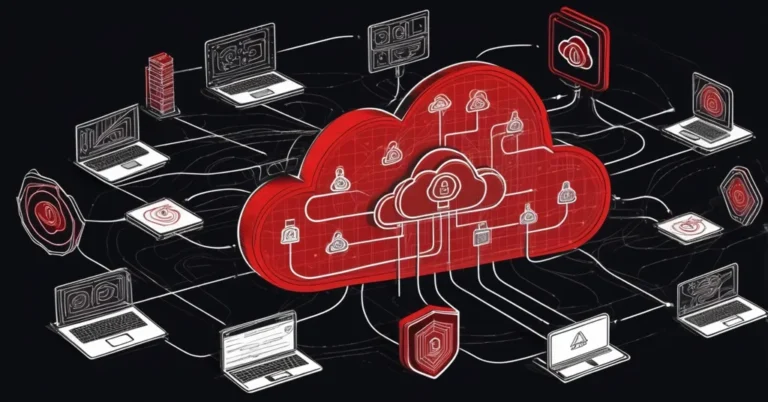Secure AI Workflows: Balancing Innovation and Data Protection
As companies rapidly adopt generative AI to drive innovation, ensuring the secure handling of sensitive customer data is crucial for maintaining trust and compliance. Sophisticated AI solutions now need to do more than just transform data—they must protect it without impeding business processes. A powerful strategy lies in combining robust detection mechanisms with reversible data tokenization.
Integrating Detection and Tokenization
Amazon Bedrock Guardrails serve as an initial line of defense by automatically scanning for and masking sensitive information such as personally identifiable information (PII). For those unfamiliar, these guardrails use predefined filters to spot data that could compromise security. However, while masking effectively obscures inputs by replacing them with generic placeholders, it also renders the original information inaccessible.
“When guardrails replace sensitive data with generic masks, the original information becomes inaccessible to downstream applications that might need it for legitimate business processes.”
This limitation is where tokenization becomes essential. Unlike masking, tokenization involves creating format-preserving tokens—essentially a lock-and-key system focused on data integrity. These tokens maintain the original data’s structure, ensuring that systems relying on specific formats can still process the information. Authorized parties can later “unlock” the tokens to retrieve the genuine data when necessary, thereby balancing security with functionality.
“Unlike masking, tokenization replaces sensitive data with format-preserving tokens that are mathematically unrelated to the original information but maintain its structure and usability.”
Orchestrating Secure AI Workflows with AWS
AWS provides a suite of services that can seamlessly integrate these two layers of protection. Using AWS Lambda, API Gateway, and Step Functions, organizations can build a scalable workflow that detects sensitive data, routes it through tokenization services, and later detokenizes it as required. For instance, a financial advisory application can initially apply guardrails to flag and mask sensitive inputs. The system then hands over the masked data to a trusted tokenization solution—such as the Thales CipherTrust Data Security Platform—to generate reversible tokens.
This architecture not only adheres to strict regulatory mandates but also allows downstream systems that depend on the original data format to operate without disruption. The process embodies a full-circle approach to AI security, ensuring data remains protected yet accessible for authorized use across departments.
Real-World Applications and Benefits
Consider a scenario in a financial services environment. A client’s sensitive information enters the system and is immediately processed by Amazon Bedrock Guardrails. While the guardrails mask the data to prevent exposure, a tokenization service converts these masks into reversible tokens. This arrangement permits customer service or risk assessment teams to access and use the data when legally and operationally necessary.
Such a secure and reversible workflow is not only vital for finance but can be adapted across various regulated industries—from healthcare to insurance—where both data privacy and operational integrity are paramount.
Key Considerations
-
How can businesses maintain both data protection and access?
The integration of detection mechanisms like Amazon Bedrock Guardrails with tokenization provides a dual approach to secure data handling, ensuring that sensitive information is both obscured and available for authorized retrieval.
-
What distinguishes masking from tokenization in AI workflows?
Masking offers immediate, irreversible protection by hiding data, whereas tokenization preserves data format and allows for reversibility, making it ideal when the original data is needed for legitimate processes.
-
How do AWS services support this secure data processing pipeline?
AWS Lambda, API Gateway, and Step Functions work together by detecting sensitive data, seamlessly routing it for tokenization, and later managing the safe detokenization process when authorized, ensuring scalability and reliability.
-
How could these methods apply to sectors beyond finance?
Any industry facing strict data protection and compliance challenges—such as healthcare, legal, or telecommunications—can adapt this architecture to balance regulatory demands with operational efficacy.
Future Trends in AI Security
As AI continues to evolve, so will the strategies for safeguarding sensitive information. Innovations in tokenization techniques may soon offer even more efficient ‘lock and key’ systems that further minimize risk. Meanwhile, emerging AI agents and platforms like ChatGPT are advancing automation processes across industries. By investing in secure AI workflows today, organizations position themselves to navigate an increasingly complex digital landscape where protecting data is as critical as deploying transformative AI solutions.
This comprehensive approach to integrating security and operational flexibility highlights how organizations can harness advanced AI while remaining compliant with data protection regulations. Embracing such secure data workflows will empower businesses to leverage AI automation and AI for sales, all without compromising on the trust and integrity at the heart of their operations.
